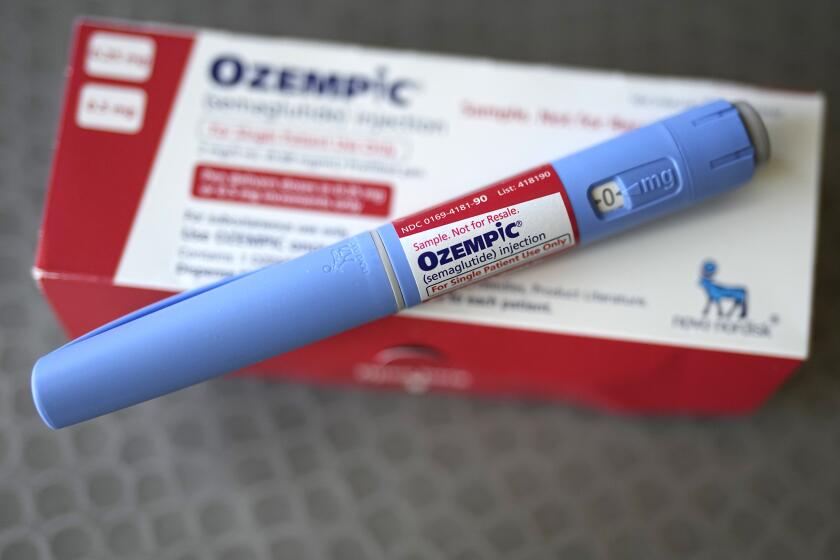Op-Ed: Protests are one thing. Voting is another
- Share via
Donald Trump did a lot of lying during his first weekend as president, inflating the size of his inauguration crowd and denying his prior attacks on the Central Intelligence Agency. But there was one thing that he got right, or nearly so.
“Watched protests yesterday but was under the impression that we just had an election!” Trump tweeted on Sunday. “Why didn’t these people vote?”
Protesters at Saturday’s Women’s March in Washington and at dozens of other rallies across the country were quick to ridicule the remark, noting that people who travel long distances to demonstrations aren’t likely to sit out election day. And they stressed that more Americans voted for Hillary Clinton than for the man who was sworn in on Jan. 20, although Trump — with his characteristically blasé attitude toward the truth — has denied that too.
In Detroit ... more than 75,000 voters who had supported Obama didn’t make it to the polls. They didn’t vote for Trump; they simply stayed home.
Yet if you swap out “these people” for “more people,” Trump was onto something. Compared with other democracies, a pathetically small number of Americans bother voting. And the key to stalemating Trump — and to defeating him the next time around — will be getting more people to the polls.
Among the 34 countries in the Organization for Economic Cooperation and Development, the United States ranks 31st in the percentage of eligible voters who turn out to cast ballots. Last November, only 58% of eligible Americans voted. That’s despite the fact that some states have implemented same-day registration — which lets people register and vote simultaneously — and that a growing number of states provide early voting by mail.
To excuse low turnout, some Democrats were quick to blame new voter-identification laws and other restrictive measures, which have been targeted at minorities. But overall voting levels were about the same in 2016 as in 2012, suggesting an older and more chronic culprit: lack of interest. Put simply, millions of Americans don’t care enough about elections to show up for them.
That was especially bad news for Clinton in states such as Michigan, which backed President Obama in 2012 but swung to Trump in November. In Detroit, for example, more than 75,000 voters who had supported Obama didn’t make it to the polls. They didn’t vote for Trump; they simply stayed home.
So did half of America’s voters between the ages of 18 and 29. Clinton handily beat Trump in this age category, by a margin of 55% to 39%. But she couldn’t get enough of them to vote to make a difference in the final tally.
How can Trump’s opponents get out the vote (in the right places) the next time around? The first step — as in Alcoholics Anonymous — is admitting that they have a problem. It’s not just Clinton who lost; Democrats are the minority in the House and the Senate, and have been routed at the state level. They can’t blame that on the Russians or Republican villainy.
Next, of course, they’ll have to frame strategies that appeal to a wider swath of Americans. Almost by definition, protests preach to the converted. The “pussy hats” and obscene signs from Saturday’s rallies aren’t likely to persuade people who stayed home — or who voted for Trump — to join the Democratic column.
The best solution is old-fashioned organizing, focused on the issues of the most pressing concern to voters: healthcare, jobs and wages. We got a taste of that last month in Macomb County, Mich., where Democratic Sen. Chuck Schumer and independent Sen. Bernie Sanders led a rally in defense of the Affordable Care Act. If Democrats are going to win back places such as Macomb, which went decisively for Trump, they have to show people why they should switch sides.
And yes, that means reaching out to voters who cast ballots for a confirmed bigot and misogynist. Despite all of the talk about “inclusion” at Saturday’s demonstrations, we didn’t hear a lot about adding white working-class and rural voters to the anti-Trump coalition. That’s a big mistake. And it’s a great way to be a loser — to borrow one of Trump’s favorite insults — the next time.
Jonathan Zimmerman teaches education and history at the University of Pennsylvania. He is the author of “Campus Politics: What Everyone Needs to Know.”
Follow the Opinion section on Twitter @latimesopinion and Facebook
MORE FROM OPINION
The TPP is dead, but don’t bury it yet
What Trump means when he says ‘America first’
When L.A. takes to the streets, it defines itself as a city
In so-called flyover country, lots of ‘real’ Americans are mad as hell at Donald Trump too
More to Read
A cure for the common opinion
Get thought-provoking perspectives with our weekly newsletter.
You may occasionally receive promotional content from the Los Angeles Times.









